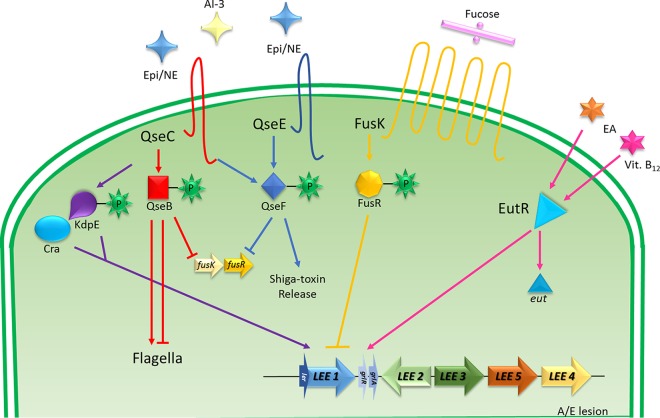FIG 2.
Chemical signaling by Epi/NE, AI-3, fucose, and ethanolamine (EA) in EHEC interacts with transmembrane sensor kinase receptors and activates a TCS via response regulators, which may activate or repress the signal transduction. The QseC sensor kinase has a central role in the activation of the QseB response regulator by Epi, NE, or AI-3; QseB regulates the expression of flagella and represses the expression of fusK/-R. QseC can also phosphorylate KdpE, which together with Cra, activates the pathway responsible for LEE activation. QseC also may activate the response regulator QseF, which stimulates the production of Shiga toxin, but it is able to repress the expression of fusK/-R. The cognate sensor FusK is activated by fucose and phosphorylates FusR to inhibit LEE expression (28, 97, 104, 128). The regulation of the eut operon is also implicated: eut encodes the EutR transcription factor, which recognizes the presence of ethanolamine (EA) and vitamin B12 to modulate virulence gene expression. EutR can bind in the LEE in the absence of EA or B12, but transcription occurs only in the presence of both. In the presence of EA and B12, eut expression promotes EA metabolism, providing an advantage in the competition for nutrients, and also promotes host colonization (129).

